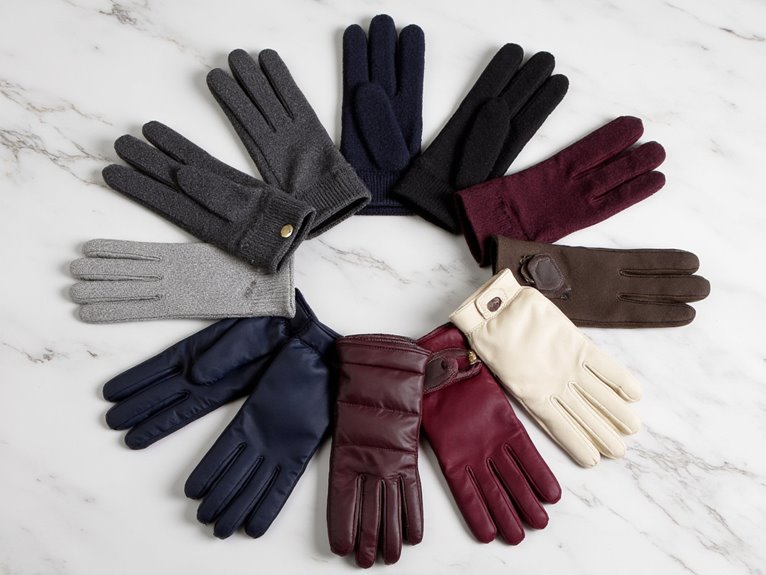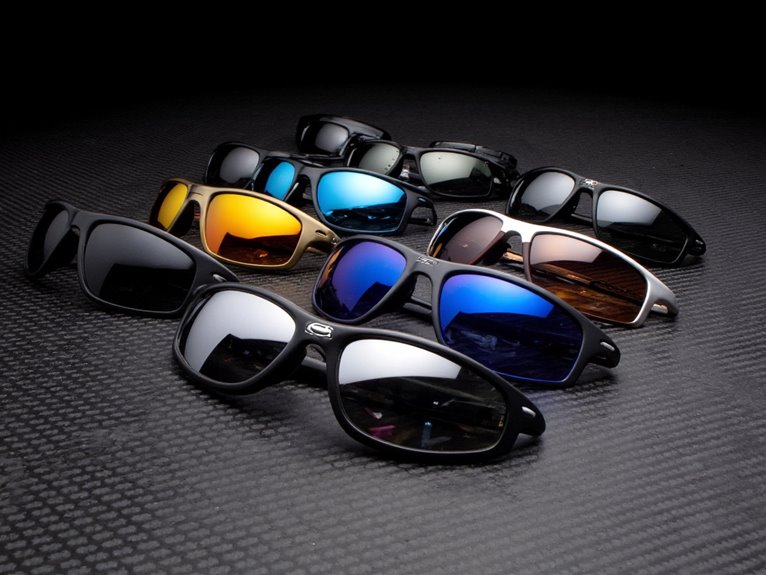Is It Better to Sit in or on a Kayak?
When deciding between sitting in or on a kayak, consider your priorities: stability, tracking, comfort, and versatility. Sit-in kayaks offer unparalleled protection from the elements, better tracking, and a sense of security, making them ideal for touring and whitewater kayaking. Sit-on-top kayaks provide ease of use, versatility, and ample storage space, making them perfect for beginners, seniors, or those with mobility issues. Ultimately, the choice depends on your paddling style, skill level, and preferred environment. As you weigh your options, discover how each design can enhance your kayaking experience and take you to new waters.
We are supported by our audience. When you purchase through links on our site, we may earn an affiliate commission, at no extra cost for you. Learn more. Last update on 18th December 2025 / Images from Amazon Product Advertising API.
Sit-In Kayak Advantages
Most kayakers will agree that sit-in kayaks offer unparalleled protection from the elements, providing a dry and comfortable ride even in rough waters.
This design allows paddlers to stay warm and dry, making them ideal for cold or wet conditions.
Additionally, the cockpit's enclosure provides a sense of security, allowing kayakers to focus on their paddling technique without worrying about taking on water.
Sit-in kayaks also offer better tracking and maneuverability, making them a popular choice for touring and whitewater kayaking.
In addition, the lower center of gravity provided by the sitting position boosts stability, allowing kayakers to tackle more challenging waters with confidence.
Sit-On-Top Kayak Benefits
While sit-in kayaks offer a range of advantages, sit-on-top kayaks boast their own unique benefits, particularly with regards to ease of use and versatility.
One significant advantage is the ease of getting on and off the kayak, making it an excellent option for beginners, seniors, or those with mobility issues.
Additionally, sit-on-top kayaks often feature open cockpits, allowing for easy entry and exit, as well as ample storage space for gear.
This design also enables paddlers to quickly shift their weight to adjust the kayak's trim, enhancing stability and maneuverability.
Moreover, sit-on-top kayaks are generally more buoyant, making them ideal for calm waters and relaxed paddling excursions.
Stability and Tracking Comparison
When comparing sit-in and sit-on-top kayaks, stability and tracking are critical factors to weigh.
A key difference lies in the design of the hull, which affects the kayak's stability and ability to track in a straight line.
The width of the base, center of gravity, and hull shape all play a role in determining how stable and trackable a kayak will be.
Wide Base Vs. Narrow
Kayakers often debate whether a wide base or narrow hull is better suited for their paddling style, with stability and tracking being two key factors in this decision.
A wide base provides greater stability, making it ideal for beginners or those who prioritize comfort over speed.
On the other hand, a narrow hull offers improved tracking, allowing the kayak to move more efficiently through the water.
- Wide base:
- Provides greater stability
- Suitable for beginners or those prioritizing comfort
- Less suitable for speed and agility
- Narrow hull:
- Offers improved tracking
- Suitable for experienced kayakers seeking speed and agility
- May compromise on stability
Center of Gravity Shift
Most kayaks are designed to sit in, with the paddler's center of gravity situated relatively low in the cockpit, which inherently affects the stability and tracking performance of the vessel.
This lower center of gravity provides a more stable platform, making it easier to maintain balance and control.
In contrast, sit-on-top kayaks have a higher center of gravity, which can make them more tippy and less stable.
However, this higher center of gravity also allows for quicker turns and more maneuverability.
In terms of tracking, sit-in kayaks tend to track straighter and maintain direction better, while sit-on-top kayaks may require more corrective strokes to stay on course.
Understanding the implications of center of gravity shift is essential in choosing the right kayak for your paddling style and preferences.
Hull Design Differences
Hull design is a critical factor in determining a kayak's stability and tracking performance, understanding the differences between sit-in and sit-on-top kayaks is essential for selecting the right vessel for your paddling needs.
Sit-in kayaks have a more pronounced V-shaped hull, which provides excellent tracking capabilities, making them ideal for long-distance touring and open-water paddling.
Sit-on-top kayaks have a more rounded hull, which boosts stability and makes them suitable for beginners or those who prefer calm waters.
Sit-in kayaks:
More pronounced V-shaped hull
Excellent tracking capabilities
Ideal for long-distance touring and open-water paddling
Sit-on-top kayaks:
More rounded hull
Improved stability
Suitable for beginners or calm waters
Ease of Entry and Exit
When considering the ease of entry and exit, a kayak's design plays a significant role, with sit-inside kayaks often requiring more flexibility and agility to climb in and out of the cockpit.
This can be a challenge, especially for beginners or those with mobility issues.
In contrast, sit-on-top kayaks typically have an open deck, allowing for effortless entry and exit. This design feature makes them an excellent choice for those who prioritize ease of use.
Additionally, sit-on-top kayaks often have built-in footwells and molded seats, providing a comfortable and secure position for paddlers.
Protection From the Elements
When paddling on open waters, kayakers are exposed to the harsh elements of nature, making protection from the sun, wind, and water a vital consideration.
A kayak's design features can greatly impact the paddler's comfort and safety, and in this section, we will delve into the key elements that contribute to a kayak's ability to shield its occupant from the elements.
From sun and wind protection to dry storage compartments and waterproof cockpit design, we will examine the features that make a kayak a comfortable and secure vessel.
Sun and Wind Protection
Paddling in open water exposes kayakers to harsh elements, making sun and wind protection essential for a comfortable and safe experience.
Unprotected exposure to the sun can lead to sunburn, dehydration, and heat exhaustion, while strong winds can make paddling difficult and exhausting.
To guarantee a pleasant kayaking experience, consider the following sun and wind protection measures:
- Wear protective clothing, including hats, sunglasses, and sunscreen
- Bring a lightweight, water-resistant jacket or poncho to block wind and rain
- Use a kayak with a built-in sunshade or canopy
- Plan your paddling route to minimize exposure to direct sunlight and strong winds
- Bring a hydration pack to stay hydrated and energized throughout your trip
Dry Storage Compartments
Kayakers often underestimate the importance of dry storage compartments in protecting their gear from the elements, but a water-resistant hatch or compartment can be a lifesaver on a rainy or rough-water day.
These compartments provide a safe haven for essential items, keeping them dry and functional.
When choosing a kayak, consider one with ample dry storage space, strategically located to minimize water exposure.
Look for hatches with secure latches, rubber gaskets, and a watertight seal to safeguard your gear remains protected.
Waterproof Cockpit Design
A well-designed cockpit with a waterproof seal is essential for keeping the elements at bay, ensuring a dry and comfortable ride even in the most inclement weather conditions.
This feature is particularly important for kayakers who venture out in rough seas or during rainy days. A waterproof cockpit design prevents water from entering the kayak, keeping the paddler dry and comfortable.
Some key considerations for a waterproof cockpit design include:
- Raised edges to prevent water from flowing into the cockpit
- Watertight seals around hatches and compartments
- A sloping deck to facilitate water runoff
- Drainage holes to quickly evacuate any water that enters
- A durable, water-resistant material for the cockpit's construction
Comfort and Ergonomic Design
Most kayaks are designed with ergonomic considerations in mind, ensuring that the seat and footrests are positioned to minimize fatigue and discomfort during extended periods of paddling.
This thoughtful design enables paddlers to maintain a comfortable posture, reducing strain on the back, legs, and feet.
Additionally, many modern kayaks feature adjustable seats and footrests, allowing paddlers to customize the fit to their individual needs.
This attention to ergonomic detail is particularly important for touring kayakers, who may spend hours on the water.
Weight Capacity and Durability
While a kayak's weight capacity is often overlooked, it is a critical factor in determining the overall safety and performance of the vessel, as it directly impacts the kayak's stability and maneuverability.
A kayak that is overloaded can become unstable, making it prone to tipping or even capsizing. This is particularly important for sit-on-top kayaks, which are designed to support more weight than traditional sit-in kayaks.
Key considerations for weight capacity and durability include:
- Maximum weight capacity: Ensure the kayak can support the combined weight of paddlers and gear.
- Material durability: Look for kayaks made with high-quality, UV-resistant materials that can withstand harsh environments.
- Hull design: A kayak's hull shape and design can impact its stability and weight capacity.
- Additional features: Consider kayaks with built-in weight capacity indicators or load-bearing seats for added safety.
- Maintenance: Regularly inspect and maintain your kayak to prevent damage and extend its lifespan.
Performance in Different Waters
Kayakers who venture into diverse aquatic environments, from tranquil lakes to turbulent whitewater, need a kayak that can adapt to varying water conditions and deliver superior performance.
The ability to maneuver and track efficiently is vital in calm waters, while stability and responsiveness are essential in rougher conditions.
A kayak that can handle different water types will provide a more enjoyable and safe experience.
When selecting a kayak, consider the water types you'll be paddling in most frequently.
For example, a shorter kayak with a rounded hull is ideal for whitewater, while a longer, narrower kayak with a V-shaped hull is better suited for calm waters.
Choosing the Right Kayak Style
When selecting a kayak that can efficiently handle various water conditions, the style of kayak is just as crucial, in the same way that different designs excel in specific aquatic environments. The right kayak style can make all the difference in your paddling experience.
Recreational kayaks: Stable and forgiving, ideal for calm waters and beginners.
Touring kayaks: Sleek and efficient, designed for long-distance travel and open waters.
Inflatable kayaks: Portable and lightweight, perfect for whitewater and rough waters.
Fishing kayaks: Stable and customizable, designed for anglers.
Surf kayaks: Agile and responsive, made for surfing and ocean play.



